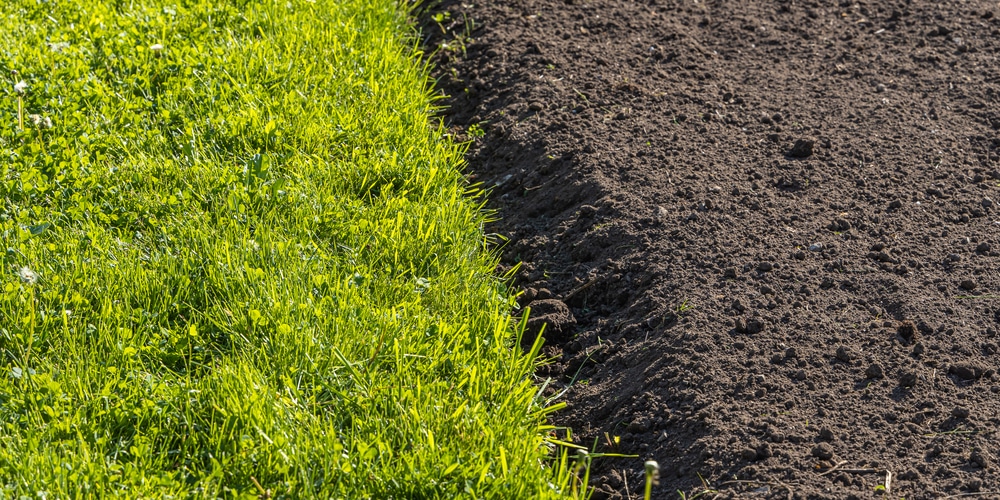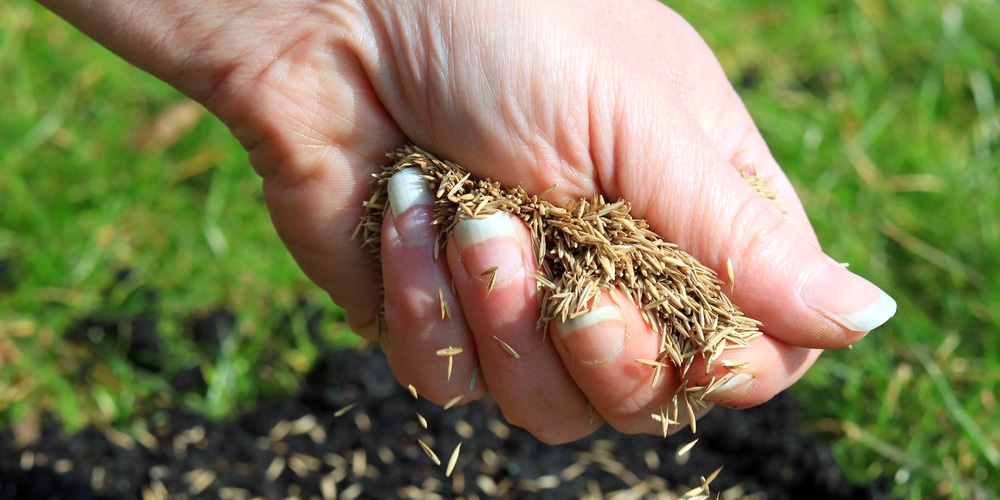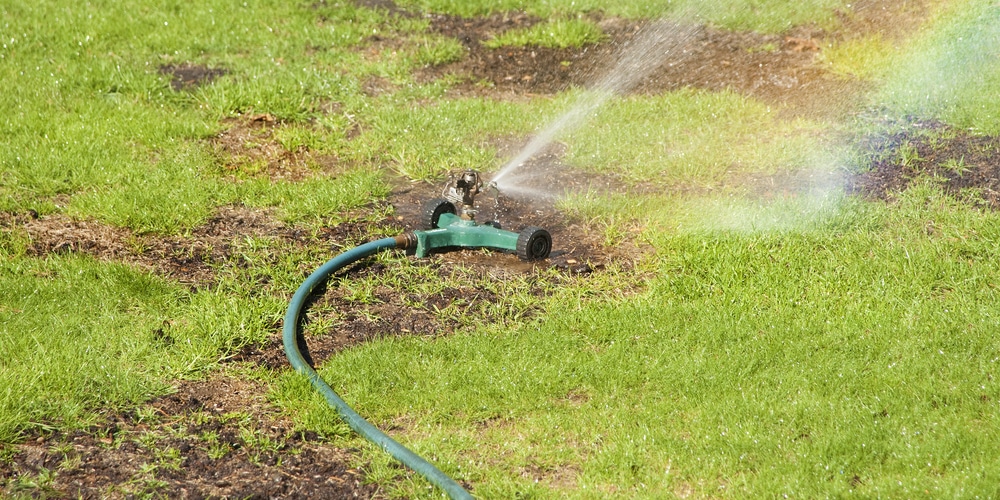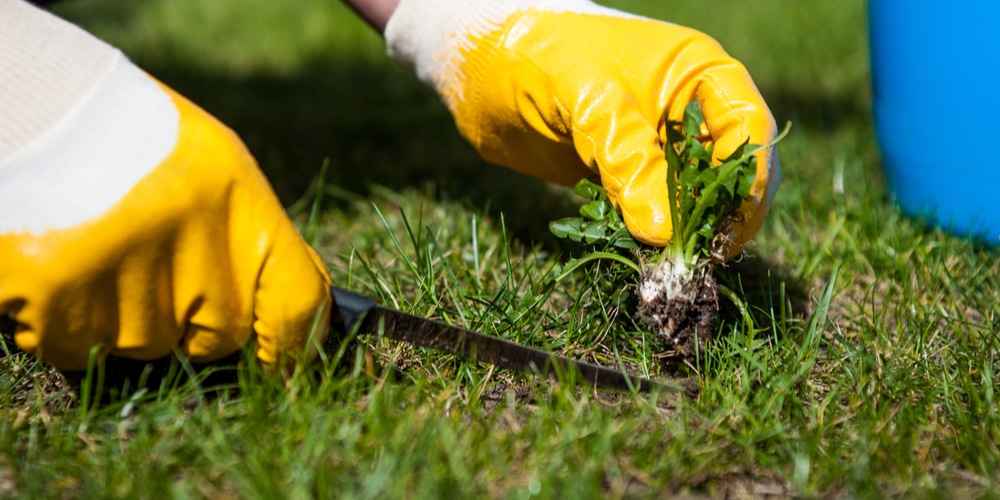Start By Assessing Your Lawn Conditions

Creating the perfect lawn starts with a thorough assessment of your lawn conditions.
By understanding your soil type, the amount of sunlight your lawn receives, and the local climate and weather patterns, you’re better equipped to select the ideal grass seed mix for your landscape.
Identifying Soil Types
Your soil is the foundation of your lawn’s health.
To effectively gauge what your lawn needs, you should:
- Conduct a soil test to determine pH levels and nutrient density.
- Observe the soil’s texture—whether it’s sandy, loamy, or clay-heavy—which influences drainage and aeration.
Sunlight Exposure
exposure is crucial for healthy grass growth. Here’s what you need to know:
- Full Sun: Lawns with more than 6 hours of direct sunlight might benefit from a grass blend that tolerates drought.
- Partial Shade: If your lawn enjoys 4-6 hours of sun, look for seed mixes that can thrive with moderate light.
- Heavy Shade: For less than 4 hours of sunlight, pick shade-tolerant species that can make the most out of limited light.
Evaluating Climate and Weather Patterns
The climate in your region plays a pivotal role in selecting a grass seed mix. Consideration of the following factors is key:
- Average temperature ranges—some grasses flourish in cooler temperatures, while others need warmth.
- Precipitation trends are essential; some grasses demand more water, while others are drought-resistant.
- Lastly, consider the extent of season change—extreme conditions require a hardy mix, able to survive freezing winters or scorching summers.
What Makes a Great Custom Grass Seed Mix?
Creating an ideal lawn requires a mix of grass types suited to your climate and soil, proper seed blend ratios for optimal growth, and an understanding of inert matter within the seed mixes.
Grass Types for Different Settings
- Cool-Season Grasses: Ideal for northern regions with cold winters and hot summers. Examples include Kentucky Bluegrass and Fescues.
- Warm-Season Grasses: Best in southern areas with mild winters and intense summer heat. Look for Bermuda or Zoysia grasses.
- Transitional Grasses: For regions between the north and south, like Tall Fescue, offering year-round greenery.
Each of these settings requires specific grass types to flourish. Choose the type that aligns with your regional climate and soil conditions.
Seed Blend Ratios
- Pure Live Seed (PLS): The viable seed percentage that’s expected to grow under ideal conditions.
- Mixture Ratios: The actual percentage of different grass types in the mix. For example:
- 50% Kentucky Bluegrass
- 30% Perennial Ryegrass
- 20% Fine Fescue
The ratios determine the final appearance and resilience of your lawn, with each grass type contributing its unique qualities.
Role of Inert Matter in Seed Mixes
- Inert Ingredients: Materials that are a part of the seed mix but do not germinate.
- Examples include:
- Coatings that ease planting
- Fillers for uniform spreading
Inert matter can affect how much live seed you’re planting per square foot. Pay attention to the PLS percentage to ensure you’re getting enough viable seeds for your lawn.
Preparation for Planting
Custom grass seed mixes offer the opportunity to tailor your lawn to specific conditions and preferences. Before sowing, a solid foundation set through proper soil preparation and timing is paramount for optimal growth.
Soil Testing and Amendment
- Conduct a Soil Test: An essential first step is to analyze your soil.
- By conducting a soil test, you determine pH levels and nutrient deficiencies — key factors in soil health.
- Amend Your Soil: Based on the test results, enhance your soil with the necessary amendments.
- This may include adding organic matter like compost to improve structure or lime to correct acidity.
- Key Nutrients for Grass: Ensure nitrogen, phosphorus, and potassium levels are sufficient to support the new grass.
Selecting the Right Time for Planting
- Assess Your Climate: The success of your grass largely depends on planting during favorable weather conditions.
- In cool-season regions, early fall or spring are the ideal times, whereas warm-season areas benefit from late spring through early summer planting.
- Monitor Weather Conditions:
- Seed germination requires consistent temperature and moisture.
- Daily weather patterns should inform your decision on when to plant, avoiding extreme weather that could harm seed development.
Making Sure the Grass Lives
Proper planting and ongoing care are crucial for a healthy lawn that starts from a custom grass seed mix tailored to your lawn’s needs. Apply these specific techniques and guidelines to ensure success.
Seeding Techniques
- Prepare the Soil: Remove debris and loosen the top 2 to 3 inches of soil.
- Spread the Seed: Utilize a seed spreader for even distribution, aiming for approximately 16 seeds per square inch.
- Cover the Seed: Lightly rake the area to cover seeds with soil or apply a thin layer of compost.
Watering and Fertilizing
- Initial Watering: Keep the top 2 inches of soil moist without oversaturation to encourage germination.
- Fertilizing Schedule: Apply a starter fertilizer at planting and follow up with regular feedings every 6-8 weeks.
Mowing and Aeration
- First Mow: Wait until your new grass reaches about 3 inches to allow roots to strengthen before the first cut.
- Regular Aeration: Annually aerate your lawn to improve nutrient absorption and reduce soil compaction.
Troubleshooting Common Issues
Custom grass seed mixes can be tailored to your lawn’s specific conditions, but even the best plans may encounter problems. From weed invasions to mysterious bare spots, here’s how you can tackle common lawn challenges.
Dealing with Weeds and Pests
Weeds:
- Identify: Recognize the type of weeds infiltrating your lawn—broadleaf, grassy, or sedge.
- Treat: Apply a pre-emergent herbicide for common weeds or a post-emergent if they’ve already sprouted.
Pests:
- Spot: Look out for irregular patches or chewing damage which can indicate pests.
- Control: Use targeted pesticide treatments specific to the intruders like grubs or chinch bugs.
Resolving Bare Spots
- Assessment: Determine the cause—high foot traffic, insufficient sunlight, or poor soil.
- Repair: Prepare the area by removing debris, loosening the soil, and ensuring proper soil conditions before reseeding.
Addressing Disease Challenges
Symptoms:
- Visible Signs: Monitor for discolored patches, slimy substances, or powdery coatings.
- Underlying Issues: Often a symptom of deeper problems like improper watering or nutrient imbalances.
Solutions:
- Cultivation: Aerate the soil to improve drainage and reduce compaction.
- Fertilization: Adjust feeding schedules, and apply the right nutrients based on soil tests to rejuvenate affected areas.
Frequently Asked Questions
Choosing the right grass seed mix for your lawn can be complex but rewarding. Each question addressed below is designed to target specific aspects of custom grass seed selection and application to ensure a lush, healthy lawn suited to your unique situation.
How can I determine the right grass seed mix for my lawn’s specific conditions?
- Assess your lawn’s sunlight exposure, soil type, and regional climate.
- Consult with experts from companies like Lifetyme Seed who offer specialized seed mix solutions tailored to different environments.
What are the benefits of creating a custom grass seed mixture versus using a pre-mixed solution?
- Tailoring the mix to your lawn’s specific needs can lead to a more resilient and robust lawn.
- It reduces wastage from ineffective seed as you are only using what truly works for your lawn’s conditions.
How should I apply grass seed to an existing lawn for optimal growth?
- Measure your lawn area accurately.
- For exact application rates, refer to the overseeding instructions found on packaging or resources like Scotts grass seed guide.
When is the most effective time of year to sow custom grass seed mixes?
- The best time to sow grass seed is during the growth seasons of spring or fall.
- This is when the soil temperature and moisture levels are optimal.
What considerations should be taken into account when creating a pasture seed mix for livestock?
- Ensure the mix contains grass varieties that are nutrient-rich and able to withstand grazing.
- Factor in the local climate and potential forage production rates to maintain a sustainable grazing system.
Could you advise on how to properly mix and apply a lawn energizer to a custom seed mixture?
- Apply a lawn energizer to the seed mix right before or after sowing to provide essential nutrients for germination.
- Follow product instructions for mixing ratios to avoid over or under-fertilization, which can negatively impact seed growth.
Last update on 2025-04-01 / Affiliate links / Images from Amazon Product Advertising API





